Last year’s Nvidia Shield portable was the most powerful Android gaming system on the market at the time. The Nvidia Shield Tablet is the most powerful Android gaming system on the market, but it’s also something its predecessor was not — useful.
The original Nvidia Shield, rebranded the Shield Portable in the wake of the tablet’s release, was a worthy but misguided attempt at championing the cause of Android gaming. Essentially a small Tegra 4-powered tablet affixed to a game controller, its form factor rendered it at best unwieldy, at worst completely useless for doing anything other than playing games.
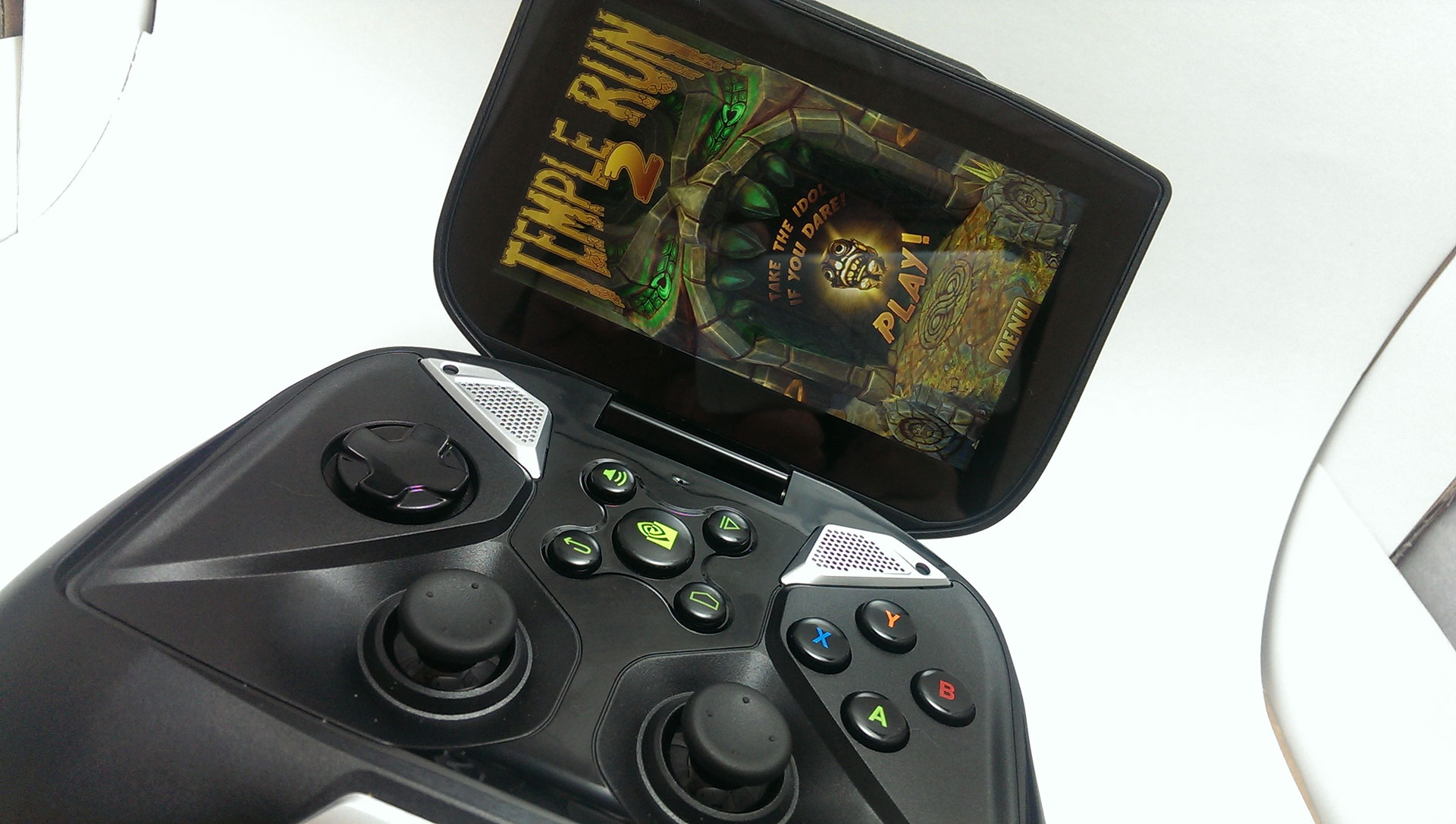
And while it did feature the ability to stream PC games from a system outfitted with the appropriate Nvidia graphics hardware, it wasn’t enough for many to justify spending upwards of $US300 on such a niche piece of equipment.
There was promise to the Shield concept however, and the Shield Tablet is that promise fulfilled.
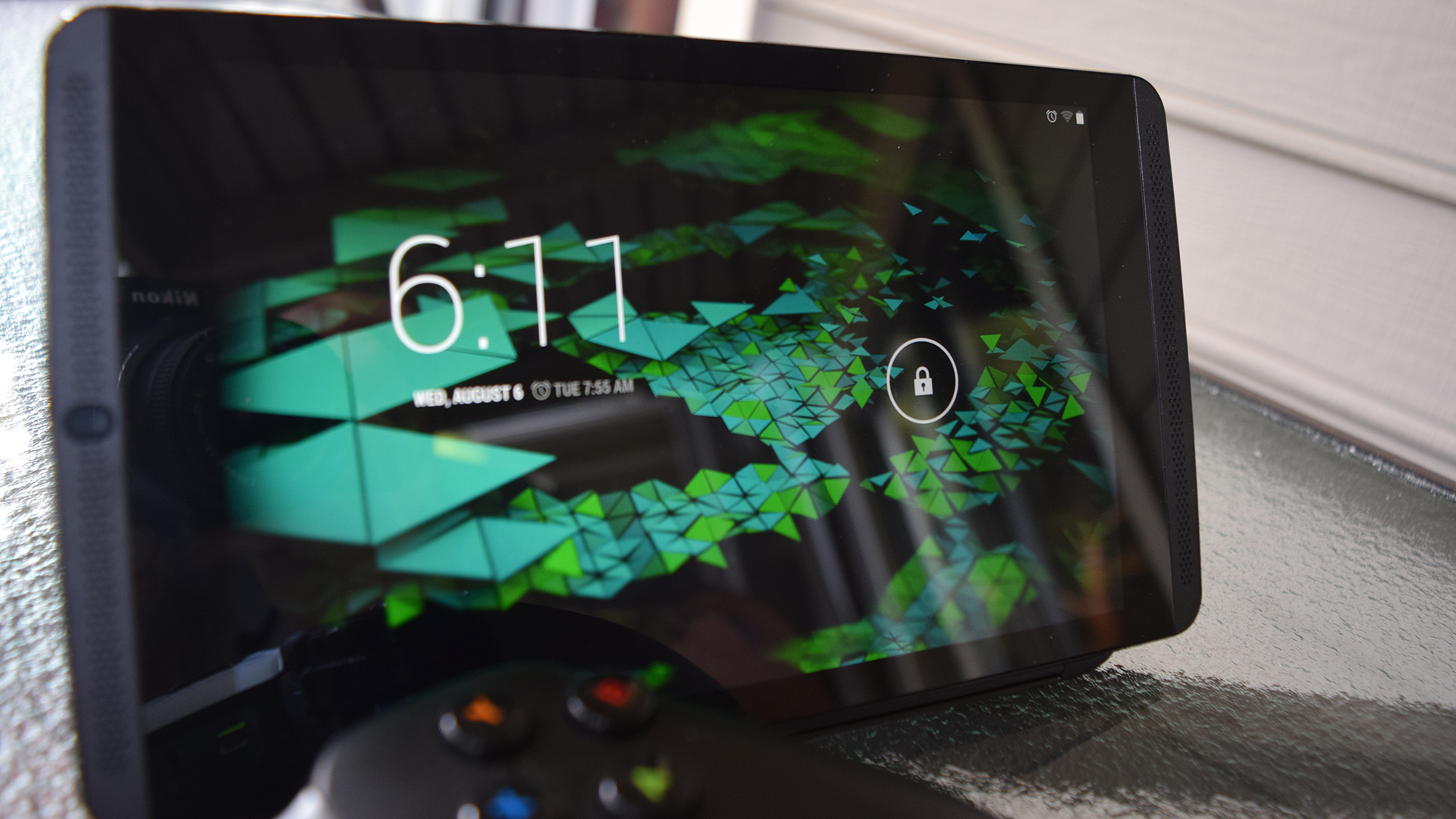
What It Is
The Shield Tablet delivers all of the functionality of the Shield Portable in a far more pleasing and practical package. Instead of a bulky clamshell creature that screams awkward gaming, we’ve got a sleek black 8-inch tablet. The 5-inch, 1280 x 720 display of the portable gives way to a 8-inch 1920 x 1080 LCD. The impressively powerful Tegra 4 processor is gone, replaced with the ridiculously powerful Tegra K1, nearly four times faster.
The most powerful Android tablet on the market, the Shield Tablet easily handles any game Google Play can dish out, while retaining the ability to stream PC titles using Nvidia’s GameStream technology. Hook it up to a television or monitor via its mini HDMI port and it will output up to 4K resolutions, effectively transforming the tablet into a game console.
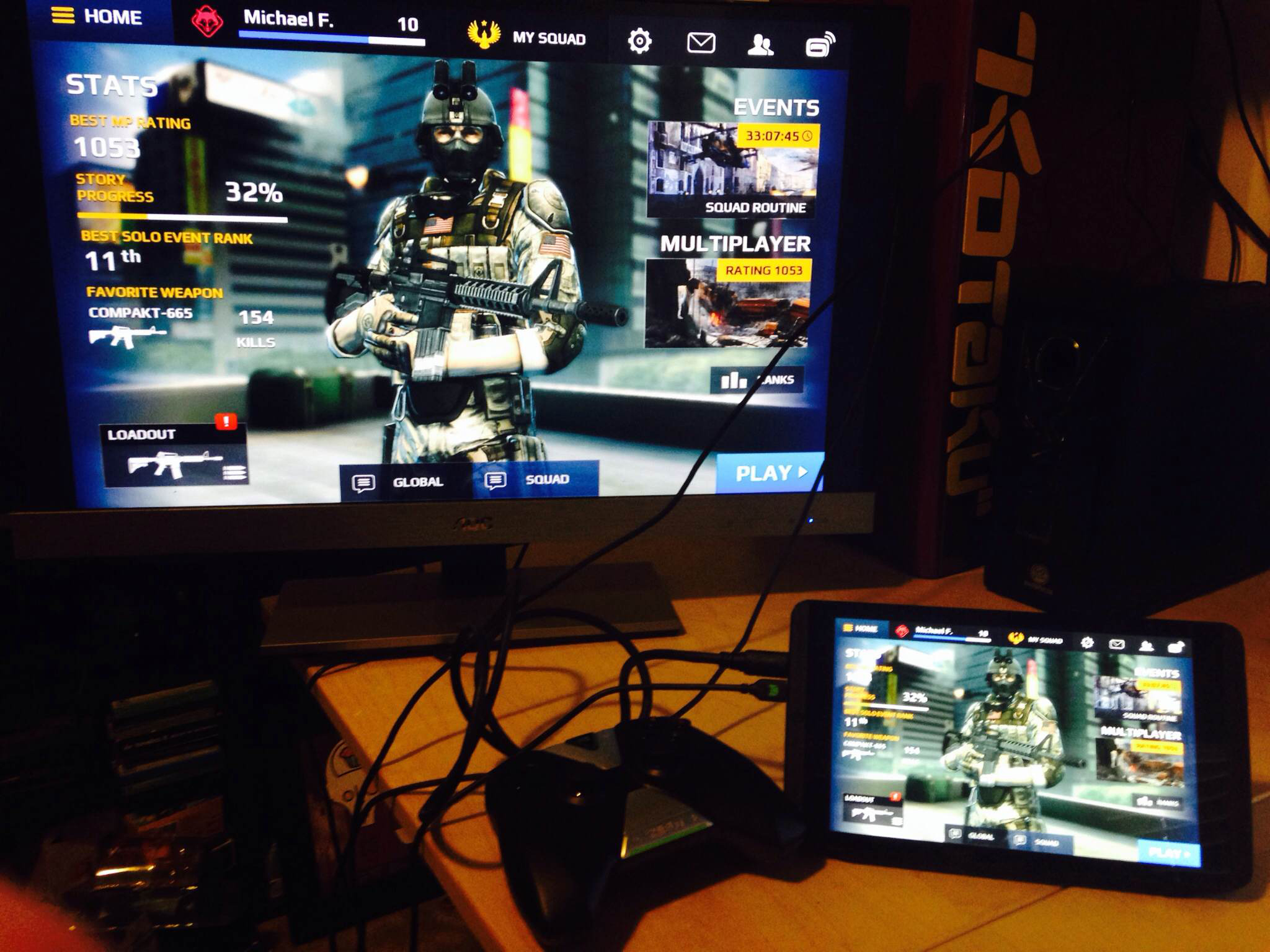
This is a game-focused device — it’s just not as obnoxious about it. Strip away the $US59.99 Shield Wireless Controller and the $US39.99 Shield Tablet Cover, and you’ve got an incredible $US299 Android tablet. Remove the game controller from the now $US199 Shield Portable, and you’ve got a broken Shield Portable.
You want specifications? Sure.
| Processor |
NVIDIA Tegra K1 192 core Kepler GPU,
2.2 GHz ARM Cortex A15 CPU with 2GB RAM |
| Display | 8-inch 1920×1200 multi-touch Full HD display |
| Audio | Front facing stereo speakers, dual bass reflex port with built-in microphone |
| Storage | 32 GB (WiFi+4G LTE) / 16 GB (WiFi-only) |
| Wireless |
802.11n 2×2 Mimo 2.4 GHz and 5 GHz Wi-Fi
Bluetooth 4.0 LE GPS / GLONASS |
| Connectivity |
WiFi+4G LTE or WiFi-only
Mini-HDMI output Micro-USB 2.0 MicroSD storage slot 3.5 mm stereo headphone jack with microphone support |
| SIM Card | Micro-SIM |
| Motion Sensors |
3-axis gyro
3-axis accelerometer 3-axis compass |
| Gaming Features |
SHIELD wireless controller compatible
NVIDIA GameStream NVIDIA ShadowPlay GRID Cloud Gaming Beta Console Mode Gamepad Mapper |
| Cameras | Front: 5MP HDR; Back: 5MP auto focus HDR |
| Video Features | 4K Ultra-HD Ready |
| Stylus | DirectStylus 2 with 3D Paint (Included) |
| Software Updates | SHIELD software upgrades directly from NVIDIA |
| Battery | 19.75 Watt Hours |
| Weight and Size |
Weight: 13.7oz / 390g
Height: 8.8in / 221mm Width: 5.0in / 126mm Depth: 0.36in / 9.2mm |
| Operating System | Android KitKat OS |
| Software |
Google Play
NVIDIA SHIELD Hub Multi language Handwriting Recognition NVIDIA Dabbler JusWrite Evernote Adobe Reader Camera Awesome |
| Cellular Connectivity |
North America:
Unlocked (Coming soon to AT&T’s 4G LTE network) LTE, HSPA+, 3G, 2G, GSM, EDGE Outside-North America: Unlocked (please check bands supported) LTE, HSPA+, 3G, 2G, GSM, EDGE |
| Cellular Bands |
North America:
LTE: Bands 2,4,5,7,17 (1900, 1700, 850, 2600, 700) HSPA+: Bands 1,2,4,5 (2100, 1900, 1700, 850) Outside-North America: LTE: Bands 1*,3,7,20 (2100/1800/2600/800) HSPA+: Bands 1,2,5,8 (2100/1900/850/900) * In certain regions band 1 and voice support is enabled |
| Optional Accessories |
SHIELD tablet cover
SHIELD wireless controller SHIELD AC adaptor SHIELD Stylus |
What I Did With It
For the past two weeks the Shield Tablet has been my only tablet. Normally I’ve got my iPad Mini nearby for gaming and email purposes and my 8.9″ Kindle Fire HDX for reading comics and watching streaming video. Instead, I’ve been all about the Shield Tablet. Playing games, streaming games via the tablet’s native Twitch functionality, setting up the tablet as a console hooked to my television and using GameStream to play PC titles running on my gaming laptop — I’ve put the Shield Tablet through its gaming paces, and I’ve been largely impressed.
Beyond gaming, I’ve been using the Shield for every day tasks — checking email, taking notes with the included passive stylus, catching up on The Killing on Netflix and reading comic books on a slightly smaller screen than I’m used to. I even took the Shield Tablet with me solo to a recent convention, where that passive stylus I just mentioned justified its existence a dozen times over.
I’ve gotten more use out of the Shield Tablet over the past two weeks than I’ve gotten out of the Shield Portable since it was released last year. That’s how much of an improvement we’re looking at.
What I Liked
An Excellent Tablet: The Shield Tablet is a device designed for gaming, yet it works so well when it’s not. Pure Android KitKat slides smoothly beneath the fingers, backed by a Kepler GPU with more power than anyone is going to need for at least a couple of years. Dual front-facing speakers ooze gorgeous sound. It’s got a micro SD slot to expand storage from 16GB (WiFi) or 32GB (LTE), a hidden stylus that proves more useful every time I remember it’s there.
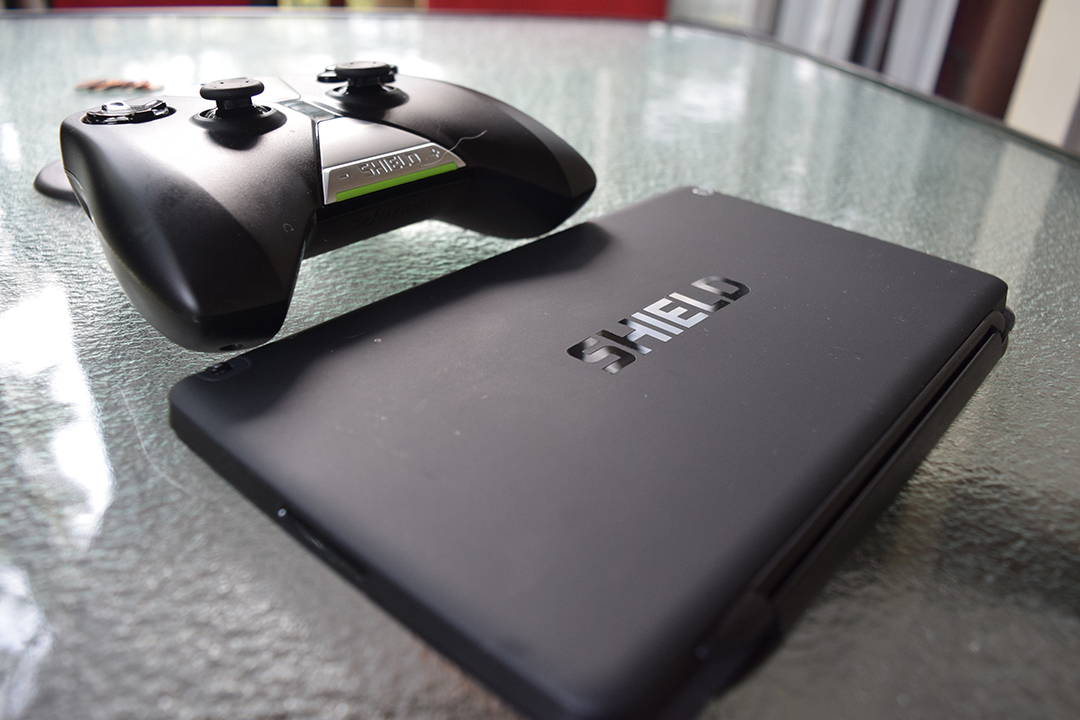
All of this house inside a solid but not bulky 13.7 ounce frame, with that lovely soft plastic finish on the back that’s a joy to touch.
If the Shield Tablet were simply an Android tablet, devoid of any extra gaming bells and whistles, it’d still be the Android tablet I’d buy.
Tegra K1 Power: The Shield Tablet readily handles most Android games, but then again so do millions of tablets and smartphones. It’s not living up to its full potential unless it’s playing a game optimised for the Tegra K1 chip inside of it. Games like Valve’s Portal and Half-Life 2 or, for something a bit more recent, Frozenbyte’s
Trine 2: Complete Story, which comes pre-installed. There’s a certain look and feel to mobile games which completely disappears when the Shield Tablet is running one of these games. It no longer feels like a tablet trying to be a console — it just feels like a console.
Unfortunately, as has been the case with most of Nvidia’s Tegra chips, it will be a while before K1 optimization is a big enough deal to generate a large library of games — honestly it may never happen. But when the graphical effects are flying and the tablet starts to heat up, these games sing.
Streaming PC Games: When your router is sufficiently stocked with dual-band power and your PC incorporates the latest Nvidia graphics cards, then you may mirror your games on your Shield Tablet, controlling them with your Shield controller.
As with the Shield Portable, many stars have to align to make the GameStream technology between your PC and the Shield Tablet work just right, plus you’re going to need a place to perch the tablet stand. The upside is, it works so much better on the 8-inch tablet display than it did on the 5-inch portable screen. Overall, this is a much more sensible way to enjoy the functionality.
Those Speakers: I love front-facing speakers on tablets. Some folks see those lines of dots and feel they ruin the aesthetic or take up too much space, but not me. After years of cupping my hand about the bottom of my iPad so I could actually hear anything, those little rows of dots are more than welcome on the front of anything I might be playing games or watching movies on.
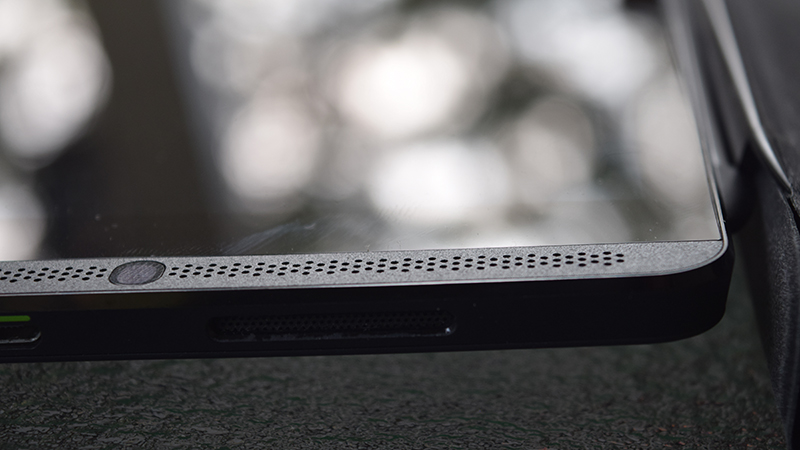
It just so happens these dot rows are rather loud and clear, which is always a plus. They’re the sort of holes that welcome friends to gather around the screen. Maybe they will bring popcorn.
The Controller: The Shield Controller is an optional piece of equipment, unless you’re buying the tablet for gaming, in which case it’s not. Technically you could purchase any number of Bluetooth-capable game pads to get the job done (a PlayStation 3 controller, perhaps?), but few would be as near-console-quality as this one.
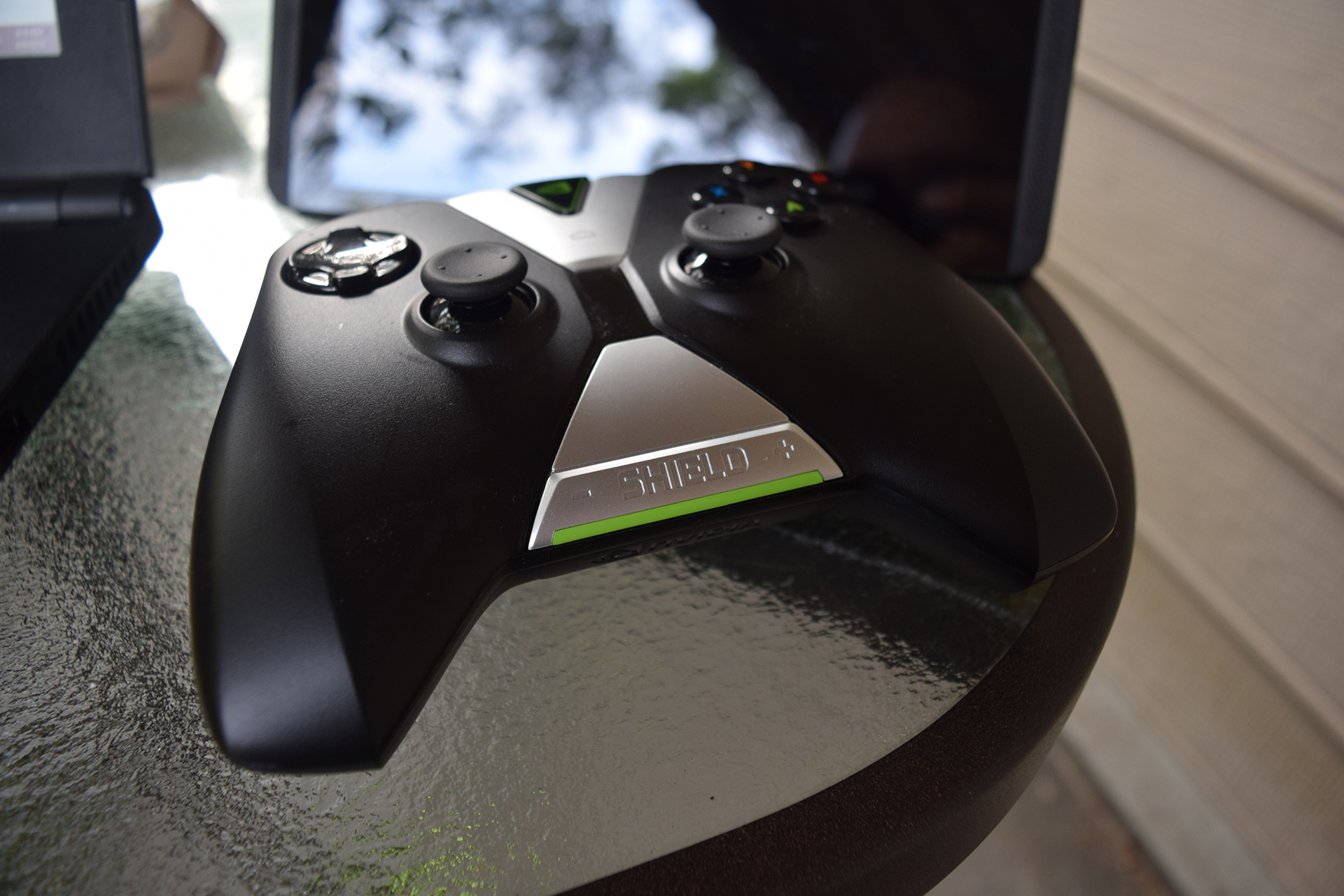
Better than Amazon’s Fire TV controller, certainly better than most third-party console peripheral makers, the Shield Wireless Controller feels nothing like the toy I figured it would be. It’s got the standard buttons and triggers, along with Android-specific controls and a nifty little touch pad at the bottom for when you’d rather have a mouse.
What I Didn’t Like
The Cover: I’m not a fan of folding, flopping, cover-style cases for my delicate electronics, and the Shield Tablet Cover is fold-ier and floppier than most.
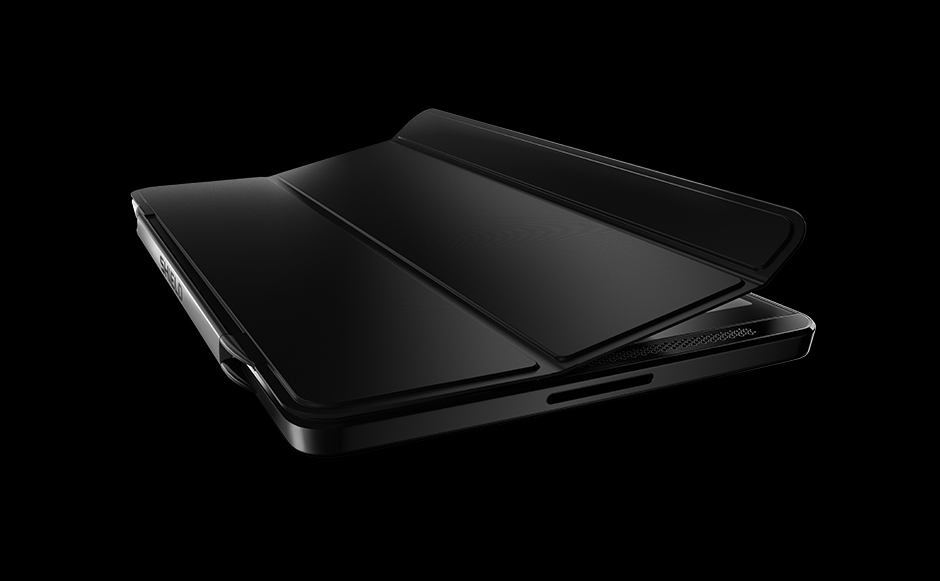
I’d much rather outfit this fine piece of equipment in the equivalent of plate armour and pick up a universal stand for gaming purposes than leave it exposed like this.
The Glare: Just a screen and a cover away from perfection, dammit. In normal lighting conditions, which for me include inside my office and inside my bathroom, the Shield Tablet’s screen is bright and vibrant. In the sunshine, however — allow me to borrow an image from Eric Limer’s review of the Shield Tablet from our sister site, Gizmodo:
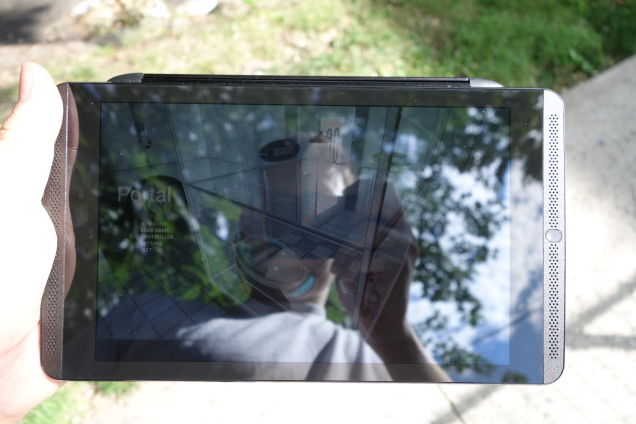
If you look closely, you can see a bit of disappointment. It’s not that I go out into the sunshine often, but I’d like to know I could still keep myself distracted when I did.
My Final Word
Nvidia attempted to define Android gaming with the Shield Portable, and it failed. It failed because Android gaming had already been defined.
Android gaming is, first-and-foremost, a rectangle that reacts to the touch of the players’ fingers. That’s what millions of people are enjoying every day, all over the world. You can add a game controller or a larger screen to the mix, but unless that core experience is present the appeal will be limited.
With the Shield Tablet, Nvidia started with that perfect rectangle. It’s the core of the product, ready to accommodate more traditional notions of gaming instead of being compromised by them.
The Shield is currently available in the US and Europe only. Australian pricing and availability has not yet been announced.
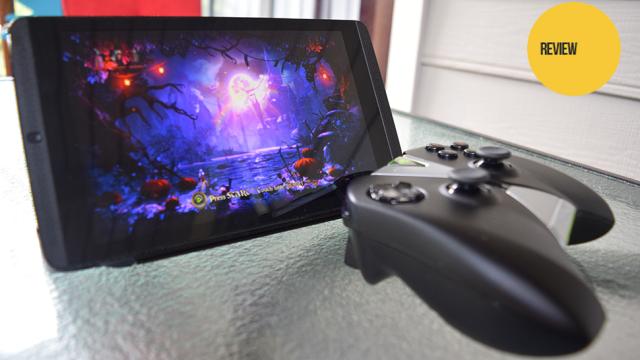
Comments
10 responses to “Nvidia Shield Tablet: The Kotaku Review”
Not available in australia. 🙁
I’m really hoping someone makes a 5.5″-7″ phone/phablet/whatever which has the Tegra K1 in it. It’s definitely overkill now, but I feel a phone like that would kick mobile gaming in its lack-lustre arse.
Oh and in regards to your statement: “Android gaming is, first-and-foremost, a rectangle that reacts to the touch of the players’ fingers.”
I’ve owned a MOGA Pocket for a while and am about to buy a Hero Power. These controllers have really upped the enjoyment and accessibility of the higher-end Android games, like Dungeon Hunter, Dead Trigger, etc…
I hope controller peripherals like the MOGA gear becomes more common; we’re carrying supercomputers in our pants and its the only way to unlock their true potential (in regards to video gaming.)
Can you elaborate on how you find the Moga?
I bought one, but I’ve always hated it because its so cumbersome to add/remove from the phone. D:
The Pocket is alright; useless for shooters or anything that requires any accuracy because of the flat analog sticks. For RPG games and basic directional gameplay they’re OK.
I’ve been keen on a HERO Power for a while now because they have PS/XBOX style analog sticks but its still quite a low-profile controller.
Not sure what you mean about cumbersome to add/remove…?
1. Hold your phone in landscape over the MOGA;
2. Place the top side under the MOGA top bracket, then use your thumbs to push the bracket up until your phone slips into the bottom bracket.
It’s pretty simple…
EDIT: I just tried it then, it’s even more simple than that…
Hold the Moga in one hand, phone in the other. Put the phone under the top bracket and push it up until the phone slips into the lower bracket. It takes less than a second?! haha =P
Yeah, that sounds about right. I should’ve waited for the Hero – it was too late when I realised the Pocket only has 1 set of triggers.
I think it must just be the width of my phone, it’s almost as wide as the bracket and you need to exert a lot of force to pull it out far enough to allow the phone in/out. 🙁
Ahhh I didn’t think of that. Is it a Note? I’ve got a One XL which is you standard kinda size.
The controller should have been a case the tablet could lock into so you end up with something like the Wii U tablet controller. If they did that, and had seamless streaming from my PC, I’d buy it in a heartbeat!
Can’t really complain about the hardware specs as I understand this is probably as good as it gets when it comes to a tablet.
However, it is very hard to justify buying another tablet just for gaming when the only AAA titles that give console experience are Half-life 2 and Portal. I simply can’t see this taking off without a few console grade AAA titles (and no, angry birds doesn’t count).
So it streams games.
Like the PSvita?
Can someone explain why would someone want to play something streamed on a handheld device instead of the PC or notebook? I’m trying to justify the practicality of all these “new innovations” lately.
Thanks. 🙂